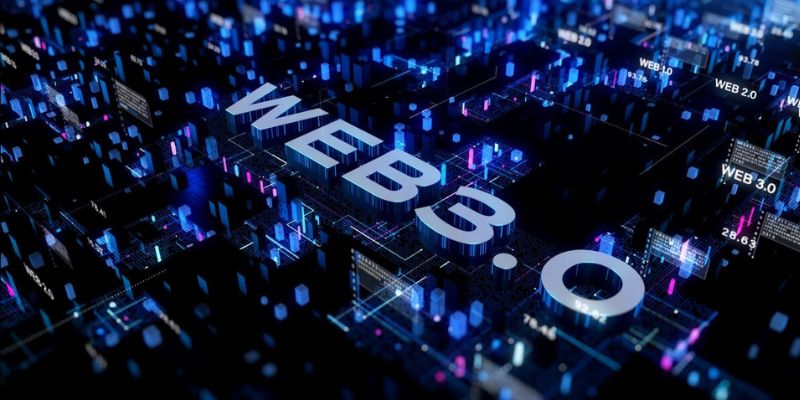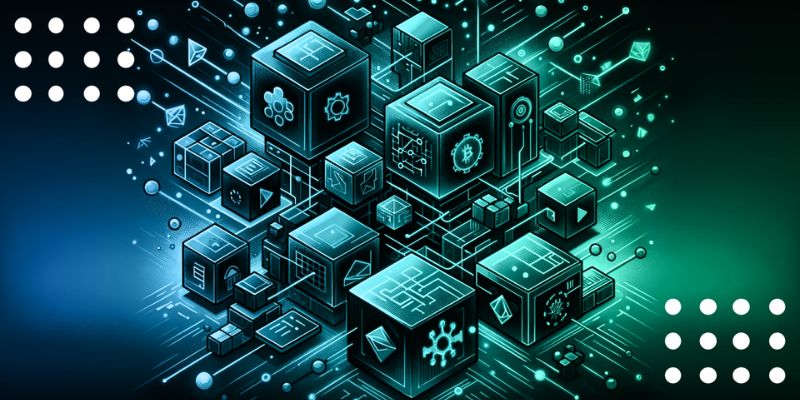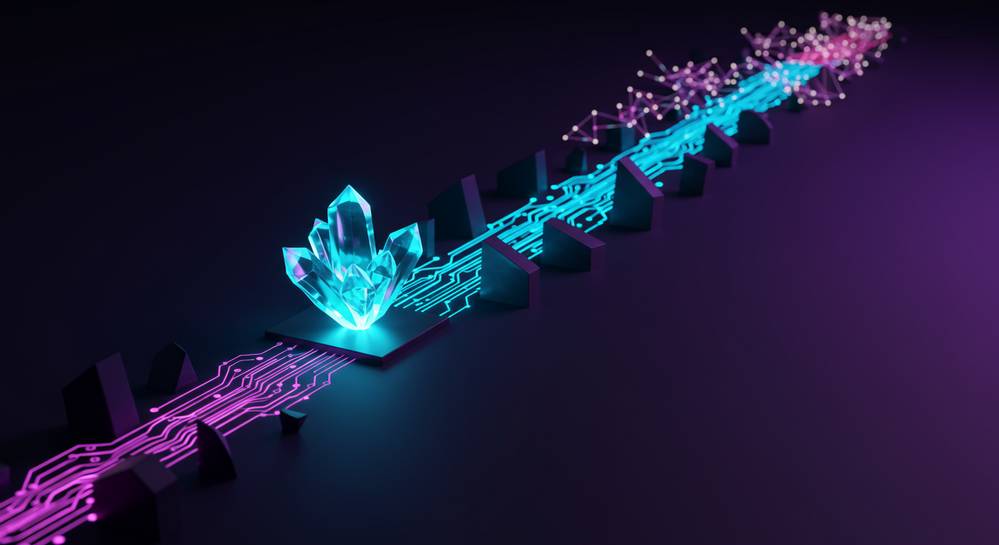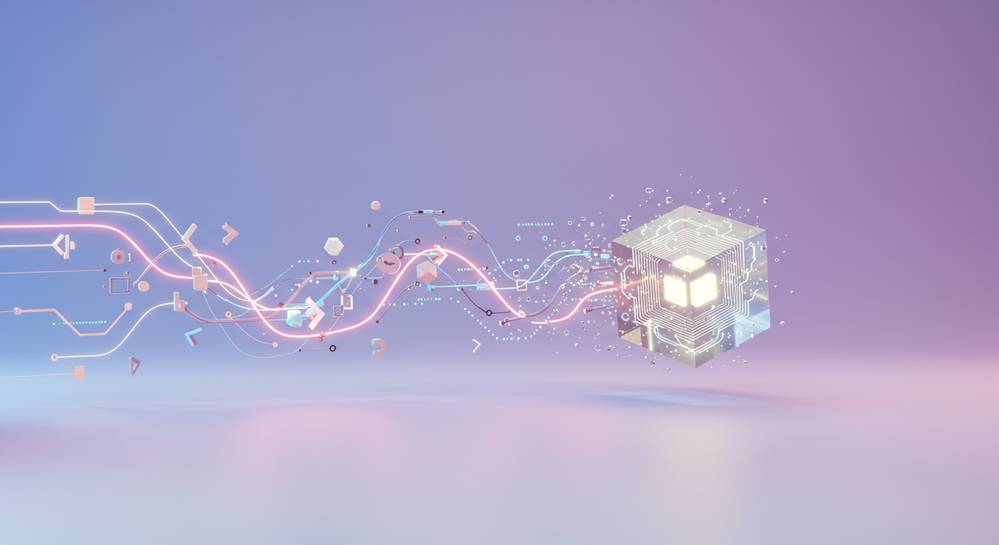As a seasoned veteran in the digital frontier, I’ve witnessed the thrilling potential of blockchain and the emergence of Web3. Yet, lurking beneath the surface are Scalability and interoperability challenges in blockchain and Web3 that puzzle even the brightest minds. These tech hurdles are not just buzzwords; they’re real stumbling blocks to mass adoption. Our goal? To conquer these challenges. We need to drill into the Scalability Trilemma to boost transaction speeds while keeping security tight. We’ve got to tackle network jams and sky-high gas fees head-on. Let’s unlock the secrets of Layer 1 and Layer 2 solutions that might just be our ticket to an efficiency breakthrough. And you bet we’re not stopping there – enhancing interoperability is also on our hit list to ensure a seamless experience across the Web3 spectrum. Hang tight as we unpack everything from sharding to zero-knowledge proofs, stitching together the vast blockchain landscape into one coherent, robust and user-ready ecosystem.
Understanding the Scalability Trilemma in Blockchain
The Concept of Blockchain Scalability Solutions
Blockchain tech faces a big problem. We call it the scalability trilemma. It’s a tough puzzle about making a blockchain that’s fast, secure, and decentralized. All at once. Too often, we must pick only two. Why’s that? Let’s dive in.
First, think of blockchain like a busy city road. Too many cars cause traffic jams. In blockchain, too many transactions slow everything down. We want to avoid that. So, we create solutions. These are called blockchain scalability solutions.
Two main types exist. Layer 1 solutions improve the original road. They widen it to handle more traffic. This is where we find bigger blocks or faster ways to agree on transactions, known as consensus mechanisms efficiency. Layer 2 solutions, on the other hand, add extra lanes. They take some traffic off the main road. These include rollups in blockchain networks and state channels in blockchain.
Let’s talk rollups. They bundle lots of transactions into one. Then, they process this bundle off the main road. This helps a ton! It means the main blockchain only checks one transaction instead of many.

Addressing Network Congestion and Gas Fees
Now, what about when we have too many cars, and everyone wants to move first? This is like when a blockchain is super busy. Everyone wants their transactions to go through fast. But there’s a toll booth, a gas fee, which you pay for using the road. When everyone’s rushing, the fee goes up.
High gas fees and network speed are linked. When fewer cars are on the road, it’s cheap. When it’s packed, it costs more. Makes sense, right? Blockchain network congestion is the traffic jam. Gas fees are the toll booth costs.
So, what do we do? We look at options to make fees lower and things move smoother. For instance, with proof of stake and scalability coming into play, we make the process of deciding who adds transactions more energy-saving and cheaper.
Our goal is to keep these digital roads clear without giving up security or control. Every car, or transaction, should get where it’s going without waiting forever or paying too much. That’s the fight. Scalability, security, decentralization. It’s not easy. But with smart contracts and interoperability, we’re making headway.
Every day, we’re building better blockchain bridges. These are tools that let different blockchains talk and sometimes share their roads. We’re creating new rules and signs for drivers to use these roads right. That’s what interoperability protocols for blockchain are all about.
When you hear about blockchain forking or light client for fast transactions, think about cities trying new traffic flow methods. Just like city planners, we want everyone to get where they’re going quickly and cheaply. That’s our work, day in and day out. Fixing the road, guiding the traffic, and maybe, one day, solving that big old trilemma.
Advancing Blockchain with Layer 1 and Layer 2 Solutions
Exploring Sharding and its Impact on Transaction Throughput
Shards are like lanes in a highway; they split traffic to move cars faster. In blockchain, sharding splits the network into smaller parts. This lets each part handle its own transactions and smart contracts. It’s like opening more cash registers in a store to serve more customers. This setup can boost the number of transactions a blockchain can handle at once, which we call transaction throughput.
The Role of Rollups and State Channels in Off-Chain Scaling
Think of rollups as express buses on our highway, carrying lots of people at once. They bundle lots of transactions off the main blockchain but still keep everything secure. This helps because the main network doesn’t get too busy. It’s sort of like taking a busy road and moving some of the cars onto a fast train that runs right alongside it.
State channels are different. Imagine a tab at a restaurant. Instead of paying for each soda, you just pay once when you leave. State channels let users start a private chat, do a bunch of transactions, and then settle up later. This means fewer transactions on the main road, which keeps things moving smoothly.
Both layer 1 and layer 2 solutions are vital for blockchain to really work for everyone. Without them, we’d have too much traffic, and everything would slow down. Our job is to keep the roads clear and traffic moving, so blockchain can reach its full potential. Let’s keep making the journey smoother for everyone.

Enhancing Interoperability for Seamless Web3 Integration
The Development of Interoperability Protocols and Standards
In the world of Web3 and blockchains, we all face a big challenge. We have tons of blockchains, but they can’t all talk to each other well. It’s like having phones that can’t make calls to phones from other companies. We need these chains to work together, to share stuff like money or info with ease.
What’s the answer? We’re making new rules and tools, called interoperability protocols. They’re like translators for blockchains. They help different types of blockchains understand each other. This means we can trade between chains without hassle.
How do they work, you ask? Think of a highway with lots of different cars. The protocols are like road signs and traffic lights. They guide the cars so they can all move smoothly together. This way, your digital money and smart contracts can travel safely and quickly, wherever they need to go.
But it’s not just about rules; it’s about building bridges too.
Bridging Blockchains: The Functionality of Blockchain Bridges and Atomic Swaps
Now let’s talk about connecting chains – a real game-changer! We use things called blockchain bridges. These bridges let us send crypto across different chains. It’s like taking a boat from one island to another holding your treasure!
Why are bridges cool? They mean you can use your stuff from one blockchain on another. No need to sell or change it first. It opens up so many doors! You can explore new games, markets, and apps without worrying about what chain you’re on.
Atomic swaps are special too. They’re like magic tricks for trading. You can swap with someone else, and it only happens if both sides agree and follow through. So, it’s fair and square – you swap or nothing happens at all.
Thanks to these bridges and swaps, we can move things around in Web3 much better. We’re making sure your crypto adventure is smooth, with no roadblocks. And that, my friends, is what linking up blockchains is all about!

Optimizing Consensus Mechanisms for Improved Efficiency
Proof of Stake vs. Consensus Mechanisms Efficiency
Blockchain makes sure no one can cheat. It’s like a game where everyone follows the rules. One rule maker is “proof of work” which Bitcoin uses. It’s strong but slow, using a lot of energy. “Proof of stake” is another rule maker. It’s like a club. If you own part of the club (a stake), you help make the rules. This uses less power and is faster. Proof of stake helps more people play the blockchain game without a big energy bill. It’s like carpooling instead of everyone driving their own car.
We find ways to make proof of stake even better. We add new parts to the “club rules” to make it run smooth. This way, our blockchain game stays fair and doesn’t get too slow or too costly. It’s all about teamwork. Everyone with a club stake pitches in. That’s how we make sure each person can play without waiting too long or paying too much.
Zero-Knowledge Proofs as a Scalability Solution
Now, imagine we want to keep some game moves secret but still play fair. This is where zero-knowledge proofs come in. It’s a mouthful, but it’s cool. It’s like telling a friend you know a secret without saying what it is. They trust you because you show them a trick that only someone who knows the secret can do.
This trick helps us do more in the blockchain game without telling everyone everything. It lets us fold up information really small. It’s like when you pack for a trip and roll your clothes to fit more in your bag. This means we can fit more moves into one round of the game. It keeps our fair blockchain game from getting too crowded.
So, we make sure our blockchain can handle lots of people and keep secrets when needed. We’re always thinking of new ways to help everyone play well together. Zero-knowledge proofs make the game better for everyone. They make the blockchain fast, saving space like rolling your clothes for a trip.
In both these ways, through proof of stake and zero-knowledge proofs, we make our blockchain game top-notch. We cut down energy use which saves everyone money and helps the planet. And we make it safe to have secret moves in the game, which means more fun for you. Our goal is to let lots of people play without slowing down or spending too much. That’s what I work on every day, making sure the blockchain game is the best it can be for everyone.
We’ve journeyed through the heart of blockchain’s growth challenge today. We started by tackling the Scalability Trilemma, diving deep into how it affects blockchain technology and why finding solutions is key for future development. We explored innovations like sharding and rollups, and how they help manage more transactions without a hitch. Along the way, we also looked at how these advances cut down on network jams and high fees.
Then, we saw the importance of Layer 1 and Layer 2 solutions, learning how they each play a role in blockchain’s evolution. After that, we discussed interoperability — a big word for making sure blockchains can talk to each other smoothly. This helps everyone use Web3 without trouble.
Finally, we weighed the merits of different consensus mechanisms like Proof of Stake and zero-knowledge proofs, which are crucial for blockchain to run like clockwork, fast and secure.
Here’s the thing: blockchain is not just about sending and saving digital coins. It’s the foundation of a new web, and it’s got to be quick, open, and easy for all. Every step towards solving the Scalability Trilemma isn’t just a tech upgrade—it’s paving the way for a world where everyone can connect and transact at lightning speed, no sweat. And that’s a future worth building together.
Q&A :
What Are the Common Scalability Challenges Faced in Blockchain and Web3?
Scalability is a significant concern in blockchain technology and Web3, as it relates to the ability of the network to handle a large number of transactions efficiently. Typically, challenges include limited transaction throughput due to block size restrictions, longer transaction confirmation times, and increased transaction fees as the network becomes congested. These issues can affect the user experience and prevent widespread adoption.
How Does Interoperability Impact the Growth of Blockchain and Web3?
Interoperability refers to the ability of different blockchain networks to share information and value seamlessly. In the context of blockchain and Web3, interoperability challenges can hinder growth because they limit the functionality and innovation potential when isolated blockchains cannot communicate with one another. Solving these challenges is crucial for creating a more connected and functional decentralized internet.
What Solutions Are Being Developed to Enhance Scalability in Blockchain?
To overcome scalability issues, several solutions are under development including the implementation of second-layer protocols like the Lightning Network for Bitcoin, sharding, and off-chain transactions. These solutions aim to increase the transaction processing capacity without compromising the security and decentralization features of blockchain networks.
Can Blockchain and Web3 Achieve Interoperability, and If So, How?
Yes, blockchain and Web3 can achieve interoperability through several approaches such as cross-chain communication protocols, sidechains, and bridging mechanisms. Developers are actively working on these interoperability solutions to allow for the exchange of information and assets, ultimately aiming to create an interconnected network of blockchains.
What Role Do Smart Contracts Play in Addressing Scalability and Interoperability Issues?
Smart contracts are self-executing contracts with the terms of the agreement directly written into code. They play a crucial role in addressing scalability and interoperability issues by automating processes and enabling the creation of decentralized apps (dApps) that can run on multiple blockchains. This can reduce the burden on the mainchain and enable smoother cross-chain transactions, thus contributing to better scalability and interoperability in the ecosystem.



